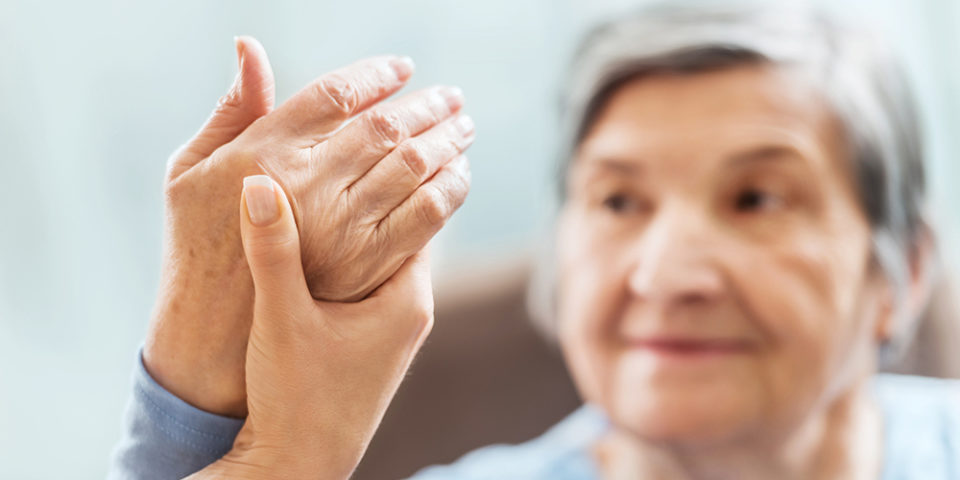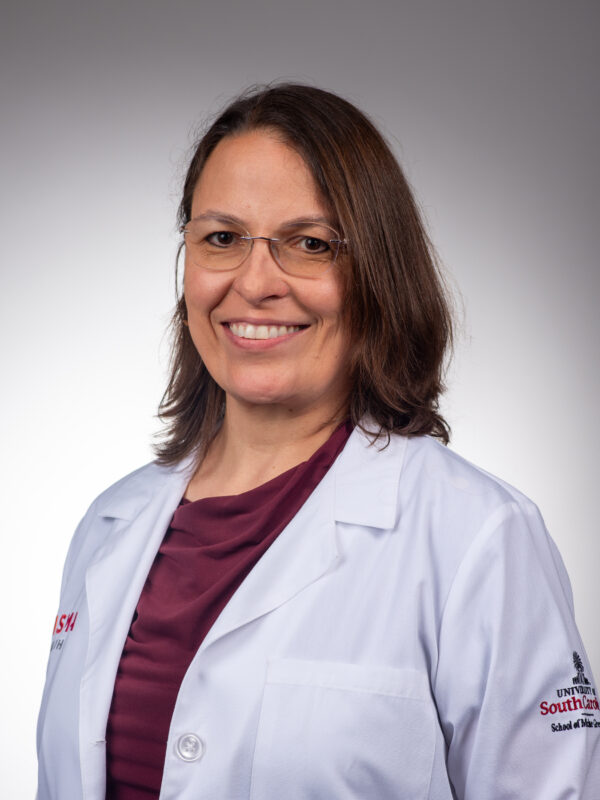Stroke recovery: How rehab and caregivers at home can help
Having a stroke is a life-changing event – and the number one cause of disability in the United States. The recovery can be a long process that requires patience and hard work. Emese Simon, MD, explained how rehab can help and offered tips for caregivers.
“Disability not only includes physical changes that most people can see, but cognitive and emotional effects on the person and their families,” Dr. Simon said.
How can rehab help in stroke recovery?
“Our short-term goal is to focus on independence,” said Dr. Simon. “While the patient is in the hospital, the team will look at how the person can function and what they can do on their own versus how much assistance they need. This is crucial in helping a patient transition home. The team works closely with the patients and their families to make that safe transition, looking at the person’s functional needs and safety. Some of the questions the team will consider are:
- Do they need equipment?
- Can they swallow safely?
- Can they have a regular diet or do they need a specialized diet?
Going from short term to long term, the team will look at transitioning to the right level of care. Some rehab options include:
- Acute inpatient rehabilitation for more intensive therapy – can be appropriate for patients who have a greater medical need, such as blood pressure or diabetes issues
- Subacute rehab – a lower level of care in the hospital
- Home health
- Outpatient services
Dr. Simon said long-term goals can include regaining the ability to walk, cook or drive, or improve speech or memory.
“Many people transition to living independently. It really depends on how they are. Within the first few days after a stroke, we can see if they’re very weak on one side or another, or if they need physical assistance to move safely from the bed to the chair. We look at the first six weeks and then transition to six months out,” she said.
Can you drive after a stroke?
Therapists can provide a formal driving evaluation, if appropriate. Driving may be restricted if the patient has had complications from the stroke, such as seizures.
“A patient’s cognition can sometimes play an even larger role than the actual physical limitation,” Simon said. “It’s really a case-by-case situation.”
What does an average recovery team look like?
A stroke recovery team can include the following:
- Physical therapist
- Speech therapist
- Occupational therapist
- Nurse
- Nursing assistant
- Recreational therapist
- Adaptive sports therapist
- Physiatrist
- Neurologist
- Primary care physician
“We really strive to involve the patient and include their family as part of the team,” Dr. Simon said. “Those two components are the most important. You have to have focus from within to recover and the right support system is crucial.”
How can caregivers at home help in their loved one’s recovery?
Some people who are recovering from a stroke may only require emotional support or for someone to drive them to therapy. But others require significant physical assistance.
“Some of my patients have significant changes in their personalities or their emotions, which can be burdensome for caregivers,” Dr. Simon said. “Seeing a loved one go through these changes can be emotionally difficult.”
Some of her tips for caregivers include:
- Join a support group. There are groups that meet virtually and provide resources that can help caregivers take care of themselves in order to be there physically and mentally for their loved one.
- Find a support network. Caregivers cannot do it by themselves. They need a backup so they can go out and do something for themselves, like go to the grocery store. Reach out to friends, family, your faith community or others so you can get that respite.
Dr. Simon said the most important thing anyone can do to aid in the recovery of a stroke is to quickly recognize the signs of a stroke and call 911.
“Knowing the signs and symptoms is very crucial because time is brain,” she said. “We want to begin providing treatment as early as those symptoms begin. So, any changes in speech, such as slurring, facial drooping, changes in your vision, difficulty getting words out, weakness on one side or the other, a severe headache – all of these can be signs of stroke. If you see these, take action.”
Find a doctor
Whether you’re looking for a primary care physician or need to see a specialist, we’re here to help with experienced, compassionate care near you.
Find a Doctor

